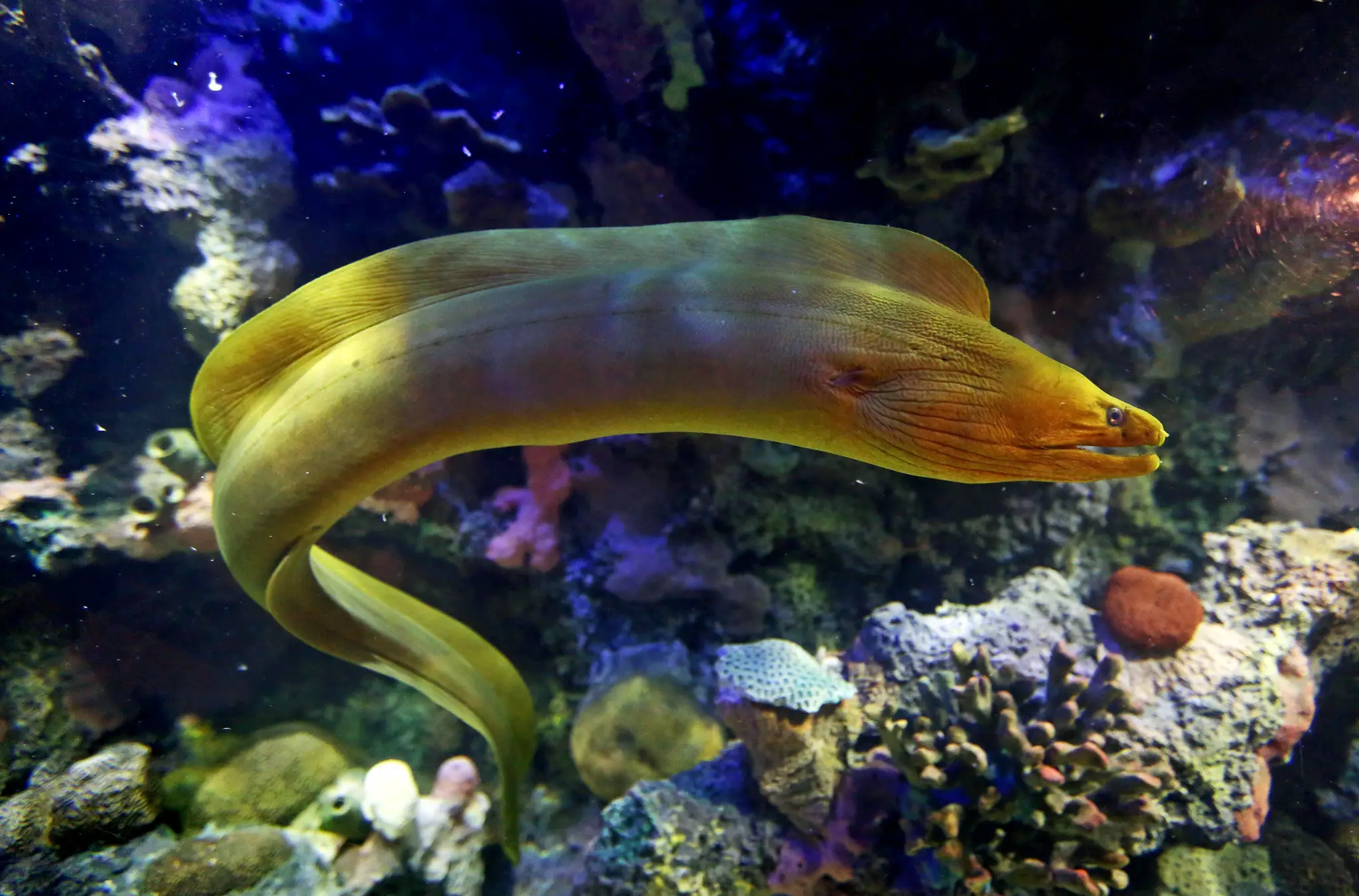Moray eels are one of the few types of eels that are found mostly in saltwater. Though, there are some that live in brackish waters as well. The largest of the species is the green moray eel.
Contents
Anatomy
Moray eels have extended dorsal fins that join with the caudal and anal fin that forms a tail-like structure. They do not have pectoral or pelvic fins. Like most eels, Moray’s have poor eyesight and rely mostly on their sense of smell to find prey.
So, they have a long and slender body that resembles that of a snake, but they are not reptiles – they are fish.
They have wide jaws with large sharp teeth and a protruding snout. They are capable of ripping the flesh from human bones and biting off fingers and toes. However, the main purpose of their teeth is to grip and tear their prey apart. To help with this, they also have a second set of teeth in a jaw located to the back of their throats. These jaws are referred to as pharyngeal jaws.

Moray eels do not have scales on their bodies, instead, they secrete a layer of protective mucus to help fend off bacteria and diseases in the water. Some even have toxins in their mucus. However, the use of this mucus defers depending on the eel’s environment.
Size
The size of the Moray eel depends on the species. It can be between 6 inches to 15 feet. The average weight of a moray eel is 30 pounds.
Lifespan
Moray eels can live between 10 and 30 years. It all depends on the species and their environment. In captivity, they can live for 10 or more years.
Hunting
Moray eels generally lie in hiding and strike unsuspecting prey. However, they are also known to work with grouper fish to hunt prey that is difficult for the grouper to get to.
A pact is formed through head-shaking. The morays then flush the prey from corners and crevices not accessible to groupers. It’s one of the first discovered instances of two lone predatory fish working together to catch prey.
Habitat
Most moray eels mostly live in tropical and subtropical climates. Most are strictly marine eels but other species, like the freshwater moray eel, live in freshwater. They prefer to dwell in shallow water and usually keep to themselves. They like to live near shelters, such as dead patch reefs and coral rubble rocks, and less frequently occupy live coral reefs.
Moray eels have been spotted along the seas of Canada, USA, Mexico, Brazil, as well as the Atlantic and eastern Pacific regions. Their habitat includes places that are abundant in rocky shores, and near the reefs and mangroves.
Moray Eel and Humans
Yes. Moray eels bite. And they can and will bite humans. That’s not to say that they feed on humans, its usually a case of mistaken identity or in self-defense. In the wild, they would mostly flee or hide from humans.
There are a few instances where divers encounter and try to feed moray eels but this not safe as these wild animals can hurt divers. Remember, they do not have very good eyesight and will bite in the direction that they sense their prey. This means that they could bite your hand or finger while trying to get whatever it is that you’re trying to feed them.
Also read:

